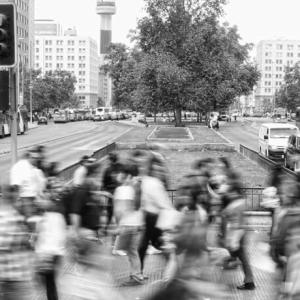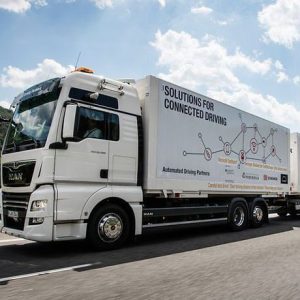
ITS Monday: Edition 29, 2023

A small collection of curated content from the worlds of intelligent transport systems, smart mobility, and associated areas.
Included this week, post-pandemic population movement, road use charging, when cars took over streetspace, autonomous trucks, and more.
The article headlines below are:
- Wide verandas, picket fences or the CBD? How coastal cities near the capitals could ride post-COVID waves of growth
- NYC Congestion Pricing Board tackles tough job of deciding who’ll be exempt
- There are too many damn cars! (Except, of course, for the one you happen to own)
- A zero-carbon transport sector needs more than electric vehicles
- It’s been 100 years since cars drove pedestrians off the roads
- Propaganda paved the way for an automotive society
- Tech is breaking accessibility barriers in transport — here’s how
- Demand for ferry trips surges – but do we have enough vessels for summer?
- CSIRO, Boeing roadmap charts flight path to sustainable skies
- Unlocking ‘smart density’: walking, riding and open space investments are the key
- There’s a key to getting more people on bikes – but motorists hate it
- Transurban delves into autonomous trucks with new collaboration
And just in case you hadn’t caught it yet, we have a recent series of interviews with transport professionals – Effects of COVID on the transport sector – what they see now, what they would like to happen post-pandemic, and what they think will happen. If you’d like to be join this conversation, drop us a line!
NEW THIS WEEK: All things Equity in Transportation
This week’s articles
Now, scroll down, and see what’s in this week’s edition. Oh, and before you do, be sure check out the quickest way to receive our new content via the subscription box just below …


Akshay Vij and Lynette Washington, of the University of South Australia, and their article in The Conversation about the impacts of COVID-19 on business and residential location decisions across metropolitan and regional cities. It’s all based on the recently released iMOVE project final report. The full final report for that project is available at: Long-term pandemic impact on business and residential location
READ THE ARTICLE
NYC Congestion Pricing Board tackles tough job of deciding who’ll be exempt
“The program is the first of its kind in the US and will charge drivers driving south of 60th Street in Manhattan in an effort to reduce traffic and improve air quality. E-ZPass drivers may pay as much as $23 during peak hours and $17 during off-peak periods.:
Related iMOVE content: Road pricing reform: a thorny issue | Traffic Congestion: Info, Projects & Resources

There are too many damn cars! (Except, of course, for the one you happen to own)
“Yet when somebody dares to connect the dots, and point out that if we really want to reduce emissions, we might actually have to reduce the number of vehicles on the road—starting, like, yesterday—all hell breaks loose.”
Related iMOVE content: FACTS: A Framework for an Australian Clean Transport Strategy
READ THE ARTICLE
A zero-carbon transport sector needs more than electric vehicles
Several University of Melbourne academics are quoted in this article about EVs not being ‘the answer’ to lowering emissions.
“Decarbonising Australia’s transport systems will take more than a transition to electric vehicles. Understanding how and when owners like to charge their cars is important. Our researchers are examining how we might persuade the increasing electricity demand to meet the time-dependent renewable energy supply.”
Related iMOVE content: Electric Vehicles
READ THE ARTICLE
It’s been 100 years since cars drove pedestrians off the roads
“One hundred years ago—almost to the day—roadbuilder Edward J. Mehren wrote in a still-published U.S. engineering journal that streets, previously the preserve of mixed traffic, including foot traffic, should be redesigned for the utility of motorists alone.”
Related iMOVE content: Equity in Transportation
READ THE ARTICLE
Propaganda paved the way for an automotive society
In a similar vein to the article above, this from Andy Boenau is a look back at how the car came to own streetspace. “The move towards automotive lifestyles didn’t occur organically just because motor vehicles were a useful invention. (And they were/are an incredible piece of technology.) But the culture shift was cultivated through a level of advertising genius that the military would proudly call a psy-op if it had been their idea. In the blink of an eye, the household automobile became the personal automobile.”
Related iMOVE content: The rise and rise of the kerb
READ THE ARTICLE
Tech is breaking accessibility barriers in transport — here’s how
“According to WHO, people with disabilities represent 16% of the world population. They also find transportation 15 times more challenging than non-disabled individuals. But for mobility to truly be sustainable, it has to go beyond reducing emissions; it has to be inclusive and cater for every member of society.” An interview with Jonathan Chacón Barbero, Senior Accessibility Software Engineer at Cabify.
Related iMOVE project: See Me app improves public transport for blind & vision-impaired
READ THE ARTICLE
Demand for ferry trips surges – but do we have enough vessels for summer?
Growing up in Sydney commuting to work by ferry was something I was lucky enough to be able to do. It seems now, particularly “post-pandemic”, catching a ferry has surged in patronage. And on some routes there is a lot of unrest about “long queues at wharves and people being left behind.”
Related iMOVE project: Seafarer training for autonomous shipping: Needs & challenges
READ THE ARTICLE
CSIRO, Boeing roadmap charts flight path to sustainable skies
A Boeing press release, about it and the CSIRO’s Sustainable Aviation Fuel Roadmap. That roadmap is downloadable from this article link.
Related iMOVE content: Sustainable Aviation Fuel
READ THE ARTICLE
Unlocking ‘smart density’: walking, riding and open space investments are the key
“So, as we debate density from a housing perspective, we also need to talk about the importance of matching any increased density with better walking and riding infrastructure. This cannot be an afterthought; it has to be front and centre of planning changes being debated across the country. Otherwise, we risk ignoring some important lessons learnt from the COVID-19 pandemic, including people’s desire for outdoor activity.”
Related iMOVE content: Active Transport
READ THE ARTICLE
There’s a key to getting more people on bikes – but motorists hate it
“A failure to make key cycling routes safer is stopping Melburnians from choosing bikes as an alternative to cars for short trips around town, according to the state’s peak motoring body. Despite a rapid and controversial rollout of bicycle lanes in the inner city during the COVID-19 pandemic, the RACV is among those concerned the construction of proposed cycling “corridors” across Melbourne is happening too slowly.”
READ THE ARTICLE
Transurban delves into autonomous trucks with new collaboration
“Toll-road operator Transurban has developed its autonomous truck ambitions after announcing a partnership with global Silicon Valley-based autonomous driving software company Plus. The partnership is aimed at advancing Transurban’s automated freight program and to take advantage of the resources and talent available in Victoria.”
Related iMOVE content: Autonomous Driving Info, Projects & Resources | Autonomous Driving Technology
READ THE ARTICLEDiscover more from iMOVE Australia Cooperative Research Centre | Transport R&D
Subscribe to get the latest posts sent to your email.

